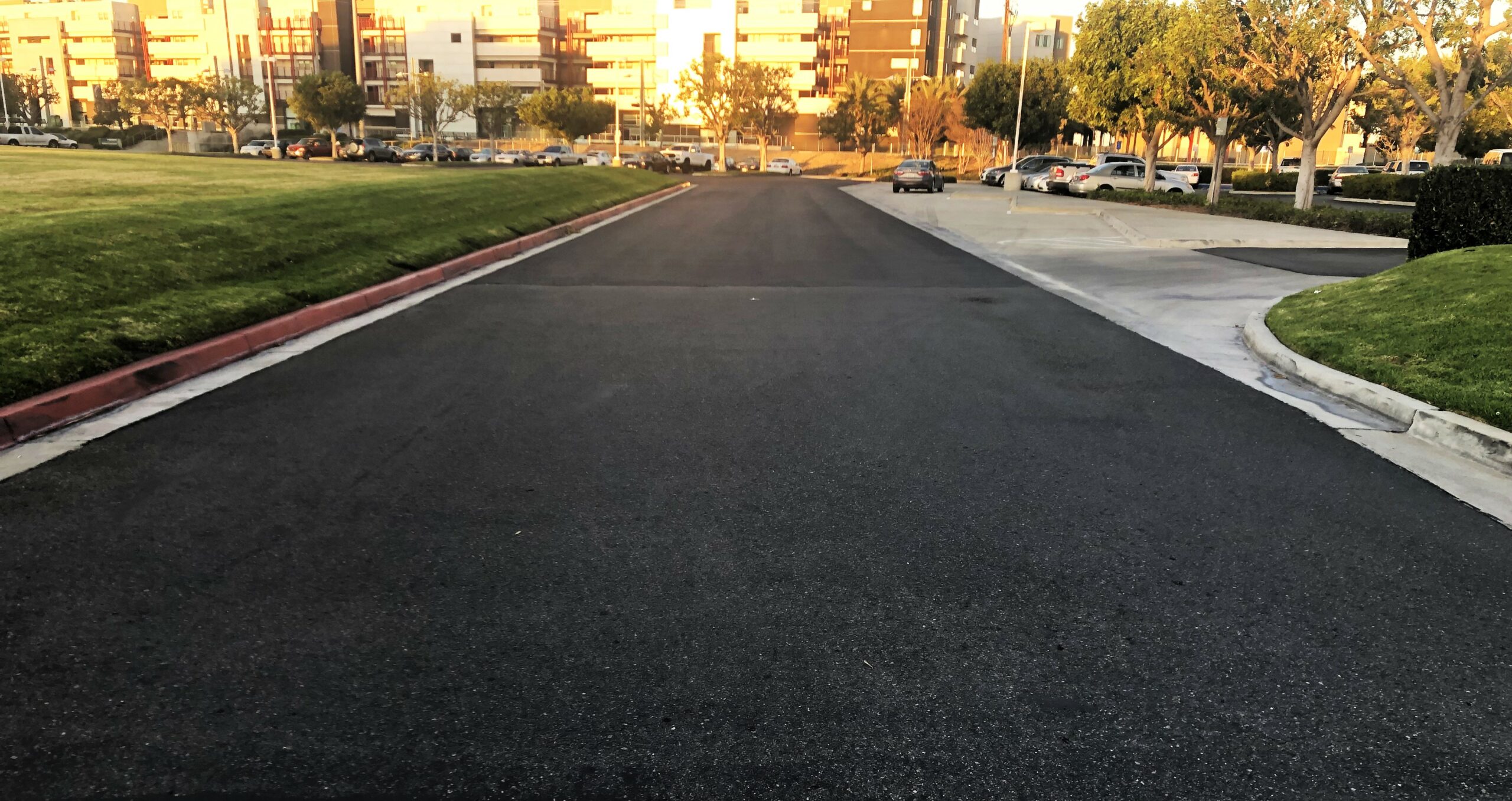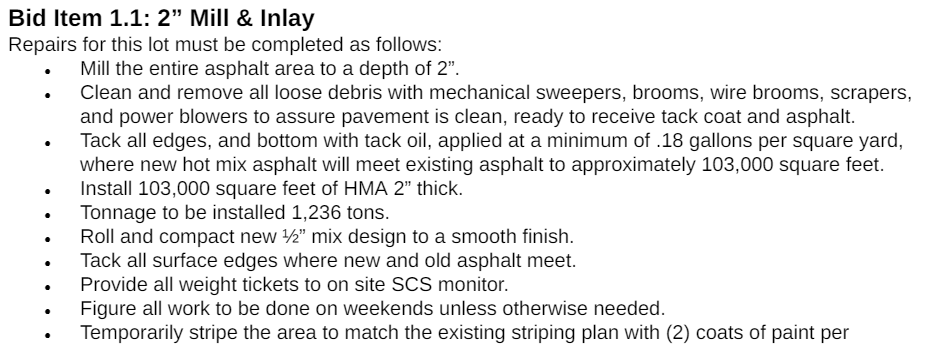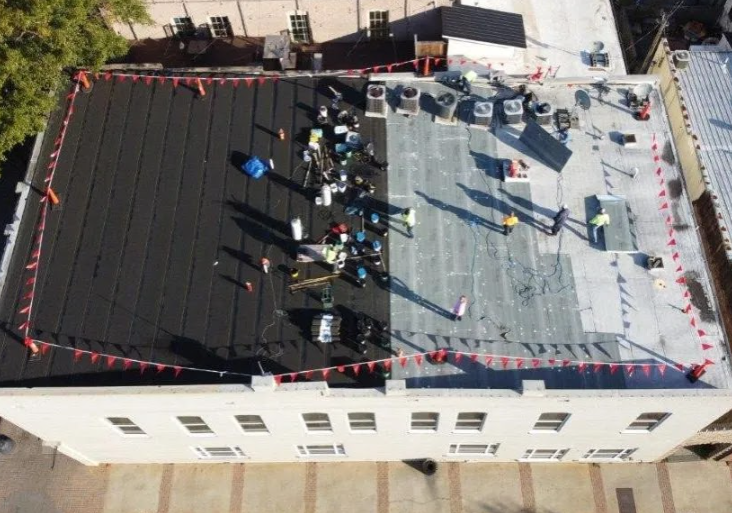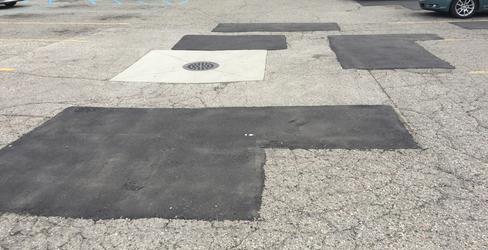
Asphalt is a durable material used for paving roads, parking lots, and other surfaces. While resilient, it’s not invincible and asphalt will deteriorate over time. The good news is that when your asphalt surface begins to show its age, there’s other options besides full removal and replacement. Our most popular scope of work is the 2” mill and inlay/overlay; because it is a cost-effective solution that can be used to extend the life of most asphalt surfaces.
The 2” mill and inlay/overlay can be a great option for asphalt with cracks, alligatoring, surface erosion or with paving fabric. However, in cases where areas display sinking, rutting, or potholes, a comprehensive assessment of the underlying substrate is necessary. Neglecting to address the substrate in such areas could risk premature failure in the new asphalt and potentially increase overall costs significantly.
When comparing the inlay process to overlay, there are a few differences. In the inlay method, the thickness removed during milling is exactly matched by the new asphalt layer applied. In contrast, an overlay typically involves minimal milling, often limited to edges and transitional areas, with the new asphalt layer added directly on top of the existing surface. The overlay approach is a great option when the existing asphalt contains paving fabric, which can be costly to dispose of in some parts of the country. This application is best used when there is adequate room to adjust elevations without causing drainage problems. It is also important to consider the added cost of raising manholes and adjusting water valves when opting for an overlay.
The inlay and overlay process contain many of the same steps; with the main variance being how much is milled. For simplicity here is the step by step process for the Mill and Inlay process:
- The first step in the 2″ mill and inlay is the milling. In this phase, a large machine called a milling machine is used to remove the top 2-inch layer of the existing asphalt. After the milling is completed the area is cleared of any loose debris and a layer of tack coat is applied to the milled surface and edges. This ensures that the old asphalt and new asphalt adhere to each other to form a strong bond.
- The next step is to “inlay” the new layer of hot mix asphalt (HMA). The new layer will look like more than 2-inches when first applied because the compaction ratio of HMA is ¼-inch per 1-inch. For example,for each inch of desired asphalt thickness an additional ¼-inch of asphalt is applied. In this case 2 ½-inches of HMA is placed and then compacted to its final thickness of 2-inches.
- Compaction is the final step in this process. Once the HMA is in place, heavy machine rollers are used to compress and flatten the asphalt until proper compaction and a smooth finish is achieved.
Below is an example of what we use for our specifications for the 2” mill and inlay.

The 2″ mill and inlay/overlay process stands as a testament to modern asphalt maintenance techniques. It offers property, facility, and asset managers a cost-efficient solution to address common asphalt surface issues. With continued regular maintenance every 3-5 years you can extend the life and functionality of your asphalt for 10-15 years. Knowing the current condition of your asphalt and the various options you can enjoy a renewed asphalt surface that continues to serve its purpose with both durability and aesthetic appeal for years to come.
Are you aware of the current state of your asphalt? If not, we can perform a comprehensive assessment to provide you with the budget and timeline for major repairs.




